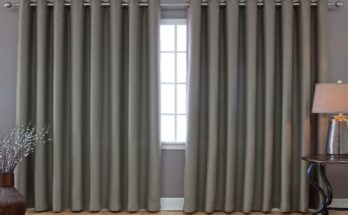Creating a stylish and well-coordinated interior involves paying attention to every detail, and window treatments play a crucial role in achieving a polished look. The combination of curtains and blinds not only adds functionality by controlling light and privacy but also allows for a harmonious blend of textures, colors, and patterns. In this guide, we’ll explore various techniques and ideas to help you mix and match curtains and blinds for a stylish and cohesive interior.
Understanding the Basics:
Before diving into the world of mixing and matching, it’s essential to understand the basics of both curtain and blinds. Curtains are typically made from fabric and offer softness and warmth to a space. Blinds, on the other hand, are more structured, providing clean lines and effective light control. By grasping the fundamental characteristics of each, you can start envisioning how they can complement each other in your home.
Coordinating Colors:
One of the simplest ways to mix and match curtains and blinds is by coordinating colors. Select a colour scheme that works well with the overall style of your home. You can opt for monochromatic tones for a subtle and sophisticated look or experiment with complementary colors for a bolder statement. For example, pairing neutral blinds with vibrant curtains can create a visually appealing contrast.
Playing with Patterns:
Mixing patterns adds depth and interest to a room, but it requires a careful balance to avoid overwhelming the space. If you have patterned curtains, consider pairing them with solid-colored blinds or vice versa. Alternatively, select patterns that share a similar color scheme or theme to create cohesion. Stripes with florals or geometric patterns with subtle textures are popular combinations that strike a harmonious balance.
Layering for Texture:
Introduce texture by layering different materials and fabrics. For instance, combine sheer curtains with bamboo blinds to achieve a light and airy atmosphere. The interplay of soft and hard elements not only enhances the visual appeal but also offers versatility in light control. This layering technique is particularly effective in spaces where you want to create a cozy and inviting ambiance.
Considering Functionality:
While aesthetics are crucial, don’t overlook the functional aspect of window treatments. Consider the purpose of each treatment in a particular room. In bedrooms, for example, blackout curtains paired with light-filtering blinds provide optimal light control for a good night’s sleep. In living areas, sheer curtains with adjustable blinds offer flexibility for various activities throughout the day.
Harmonizing Styles:
Another key aspect to consider is the overall style of your home. Whether your interior is modern, traditional, eclectic, or minimalist, your choice of curtains and blinds should align with the existing decor. For a modern aesthetic, sleek and simple blinds complemented by minimalist curtains can enhance the contemporary feel. In contrast, ornate curtains paired with classic blinds can contribute to a more traditional look.
Customizing Lengths and Layers:
Experimenting with the lengths of curtains and blinds can create a dynamic visual effect. Floor-length curtains paired with blinds that match or slightly extend below the window frame can elongate the room and make ceilings appear higher. Additionally, layering curtains over blinds or vice versa allows for a customizable approach, enabling you to adjust the level of privacy and light according to your preferences.
Balancing Proportions:
Achieving a balanced and visually appealing combination involves paying attention to proportions. Consider the size of your windows and the overall dimensions of the room. Oversized curtains or blinds can dominate a space, so strive for proportionality. Additionally, opt for curtain and blind styles that complement the architectural features of your home.
Mixing Materials:
Experimenting with different materials can add depth and richness to your window treatments. While curtains are often associated with fabric, blinds can be made from various materials such as wood, metal, or PVC. Combining these diverse textures can create a tactile and visually interesting result. For example, wooden blinds paired with linen curtains evoke a natural and relaxed ambiance.
Seeking Professional Advice:
If you find yourself overwhelmed by the myriad options or unsure about your choices, don’t hesitate to seek advice from professionals. Interior designers and window treatment specialists can provide valuable insights based on their expertise. They can guide you in selecting the right fabrics, colors, and styles to achieve a cohesive and stylish look tailored to your home.
Conclusion:
Mixing and matching curtains and blinds is a creative and enjoyable process that allows you to personalize your home while enhancing its overall aesthetic. By understanding the fundamentals of each window treatment, considering functionality, and experimenting with colors, patterns, and textures, you can achieve a stylish and harmonious interior that reflects your unique taste and complements the design of your living spaces. Whether you prefer a modern, eclectic, or traditional style, the key is to strike a balance that not only looks great but also serves the practical needs of your home.




